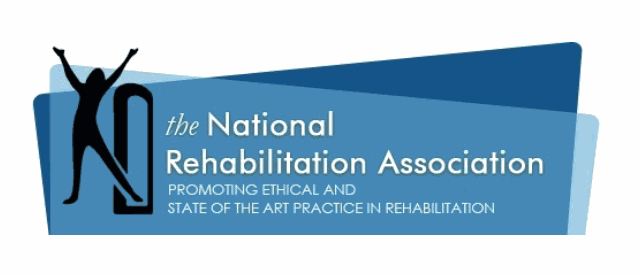The National Rehabilitation Association (NRA) is the oldest professional member organization in the United States that advocates for the rights of individuals with disabilities while also promoting high quality, ethical, and collaborative practice across the rehabilitation profession. NRA, comprised of counselors, educators, researchers, and diverse agents of community integration, is committed to continuously impacting and improving upon the multifaceted conditions, across our society, necessary to enhance quality of life of individuals with disabilities, their families, and our communities.
NRA draws strength from the unique training, education, and credentialing of our diverse membership that believes excellence and outcomes are achieved by upholding the utmost importance of continuous learning, and professional and personal enrichment.
NRA values collaborative partnerships and relationships. Our membership reflects the importance placed on integrity, respect, transparency, accountability, and collaboration across the full spectrum of the rehabilitation profession.
Vision & Values
NRA is committed to advancing the professional practices of rehabilitation driven by culturally-competent, ethical, evidence-based and accountable practices so that individuals with disabilities would be regarded and valued as full members of our society. These individuals deserve equal access, expression of choice, and security of freedom within our communities when engaging in all aspects of life.
NRA's History
· 1923 – A group of State Administrators of Vocational Rehabilitation agencies met during the National Society for Vocational Education conference and called themselves the “National Civilian Rehabilitation Conference.”
· 1924 – The National Civilian Rehabilitation Conference held a meeting in Indianapolis with 24 members representing 18 states.
· 1925 – Cleveland, Ohio was the site of the first meeting of the conference as an independent association. Dues were $1 per year.
· 1927 – The Conference approved National Rehabilitation Association as its official name.
· 1928 – Requiring employment with a state VR agency was relaxed, persons employed in private sector rehabilitation were invited to become members.
· 1930 – The NRA drafted and had introduced into Congress, legislation to renew the State/Federal program. Membership categories were established.
· 1934 – The National Rehabilitation News was created with Willis W. Grant, of Iowa as Editor.
· 1935 – The Journal of Vocational Rehabilitation, which became the Journal of Rehabilitation, was published and was the official publication of the Association.
· 1936 to 1940 – Funding of the State/Federal program and growing the program to meet the needs of persons with disabilities took priority
· 1940’s to 1950’s – NRA employed staff. NRA’s first subunit, the region, was established in 1948, to facilitate member participation in meetings. Chapters were authorized in 1950, after Michigan organized in 1949. Divisions were authorized in 1957 and the National Rehabilitation Counseling Association was the first approved.
· 1960’s to 1970’s – Membership reached an all time high with thousands of “members, at no cost”, a practice that ended in 1975. NRA successfully fought a legal battle known as the “Florida test case” in support of the provisions of the Rehab Act of 1973 but was almost bankrupt by the action.
· 1975 to 1980 – E. B. Whitten retired and a succession of staff leaders after him combined with the uncertainty of the times led to turbulent years.
· 1980’s – An aggressive campaign to revitalize the organization and a spirit of enthusiasm began to show results with membership growth and stable staff leadership in Dr. Robert Brabham.
· 1990’s – A new mission and the first certified association executive, Dr Ann Tourigny, brought strategic planning into the process. The first leadership conference was held in 1994. By 1996, the need for more unity of purpose was being discussed, culminating with a decision by the 1998 Board of Directors to implement a plan for restructuring the organization.
· 2000 – The 1999 NRA Delegate Assembly voted to approve the restructuring plan.
· 2002 – After Legislative Director Tom Stewart’s unexpected death, Patricia Leahy was recruited for this position. Patricia’s knowledge of rehabilitation and expertise in legislative matters is unequaled on Capitol Hill.
· 2005 – The restructuring plan of 1999 was completed.
· 2007 – NRA/RCEA member Dru Fentem was successful in getting the US Senate to designate March 22, 2007 as National Rehabilitation Counselor Recognition Day in honor of the day in 1983 that the term “qualified rehabilitation counselor” was added to the language in the Rehabilitation Act.
As we go forward, NRA will continue to facilitate active and enthusiastic membership through ongoing enhancement of member benefits and excellence in leadership. Recent additions in member benefits have included the development of a job board for resume posting and position advertisements, a new website, increased CEU opportunities relevant to members’ professional certifications, and teleseminars. NRA’s legislative advocacy program continues to be immensely effective, keeping the Association and its members at the forefront of issues related to the field of rehabilitation and persons with disabilities.
